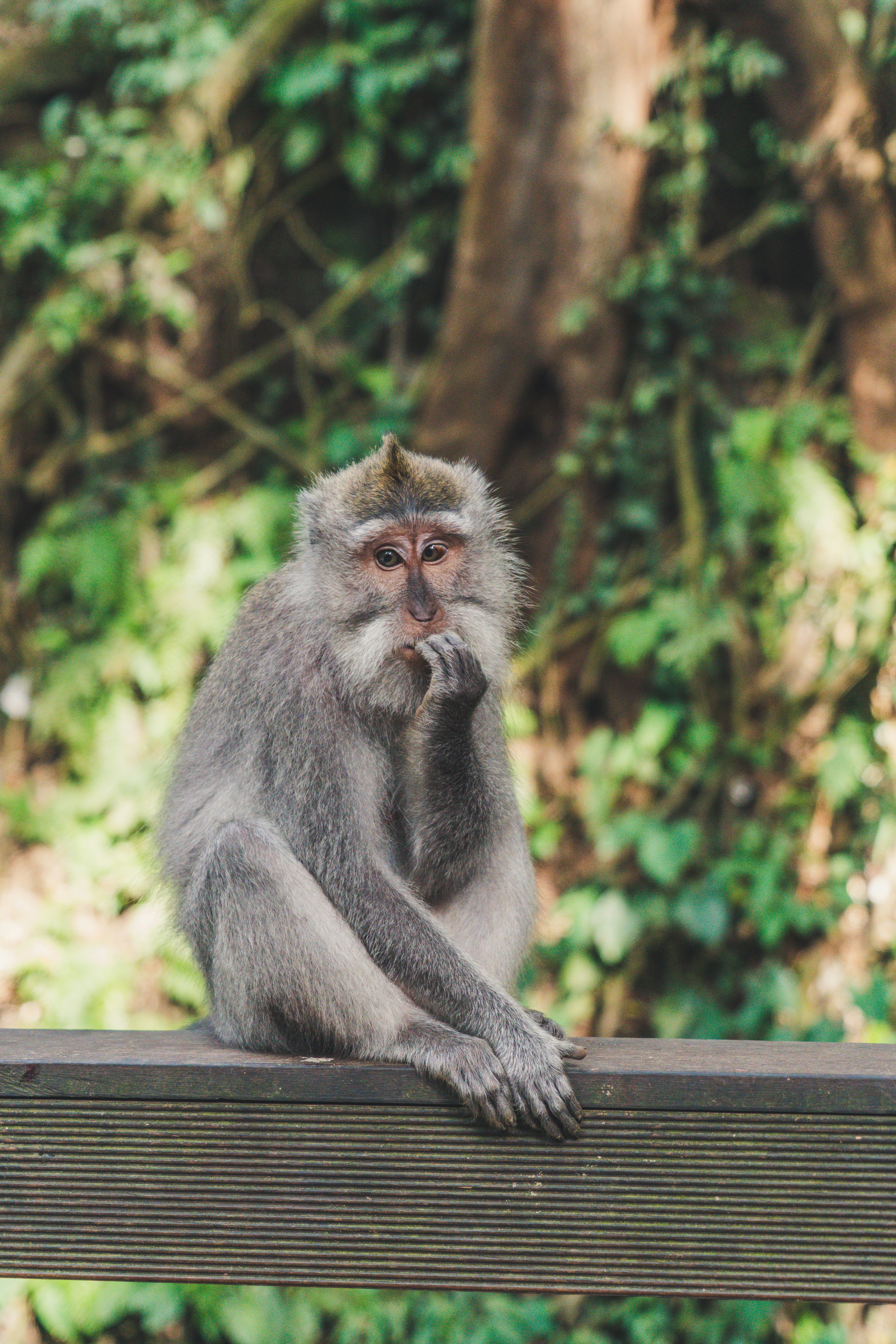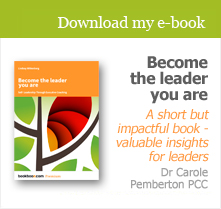opinion
Being right
From time to time I come across a philosophy of leadership which celebrates being right in all judgments, solutions and answers, particularly in relation to leadership. In this context the leader who appears to be absolutely right, and certain about their rightness, may be revered and celebrated, seen as strong and resolute: like the ship’s commander on deck, barking orders, being unwavering – the apparent source of knowing.
Responsibility and initiative
This somewhat old-fashioned view concentrates the focus in a single person: it’s a simple concept, easy to understand – and it removes responsibility, space for initiative, and power from others in the team. In reality it’s brittle and very dangerous: what happens if that single leader no longer has the capacity to hold all the power? How would others – who have been necessarily disempowered – have learnt how to pick up the reins and lead? It leaves no room for vulnerability, humility, being wrong or – importantly – learning.
Aligning with a single view
The leader – and in fact the team member – who ‘knows’ they’re right inhibits psychological safety because the suggestion (whether implicit or explicit) is that only the leader holds the truth, so that followers are invited – or perhaps expected – to align with that single view. It flies in the face of a philosophy of collective intelligence, which values everyone’s view.
Contain, close things in, close things down
As psychotherapist Barry Mason has written, people may feel certain about what the problem is and what the solution must be. In this zone people are unrealistic, blocking, controlling, potentially confident to the point of arrogant, intransigent and unwilling to listen to feedback. As he says, this is a dangerous place to stay in. From what I’ve observed it’s a place that seeks to contain and close things in. It also closes things down, allowing little room for creativity or adaptability.
The delusion and illusion of ‘knowing’ we’re right in our judgments also closes down creative thinking and in effect excludes others with dissenting views from the process. It’s diametrically opposed to a philosophy of curiosity, openness to possibilities and expansiveness of thinking.
Complexity
Not only are ‘being right’ and ‘knowing the right answer’ in relation to judgments and solutions in fact an illusion, but, very importantly, they don’t engage with the complexity that is the reality of every leader’s life. They mask what is in fact the whole picture, a picture which incorporates BANI (Brittle, Anxious, Nonlinear, and Incomprehensible, coined by Jamais Cascio to characterise the turbulence of our world) and RUPT (an alternative acronym to VUCA, and referring to Rapid, Unpredictable, Paradoxical, and Tangled). In the leader’s world of challenging problems the path is unlikely to be either straight or direct towards a solution, because such problems consist of interdependencies which are dynamic – they constantly move and change, emerge and fall away into a different perspective, thus changing their relationships with each other. In these contexts there’s no possibility of being right. A more fruitful path is one of collaboratively enquiring and experimenting, shaping hypotheses, trying out and learning, then enquiring and experimenting again.
Readiness not to know
In amongst all this too we find a willingness to accept, the preparedness to be humble, the readiness to not know, and an openness to acknowledging collective intelligence – the intelligence that comes from everyone’s thinking, not just the thinking of one person. These qualities in a leader enable fertile thinking, an expansion of possibilities, adaptability, and greater likelihood of enabling flourishing for themselves, those they lead and the organisation they lead. It can mean swallowing pride – but it can also mean the release of potential and of development or all those involved.
Photo by Immo Wegmann on Unsplash
The knowing leader
The leader who appears to be absolutely right, and certain about their rightness, may be revered and celebrated. This view removes responsibility, space for initiative, and power from others in the team. It leaves no room for vulnerability, humility, being wrong or – importantly - learning. The leader who ‘knows’ they’re right inhibits psychological safety because the suggestion is that only the leader holds the truth. It’s diametrically opposed to a philosophy of curiosity, openness to possibilities and expansiveness of thinking. Not only are ‘being right’ and ‘knowing the right answer’ in relation to judgments and solutions in fact an illusion, but, very importantly, they don’t engage with the complexity that is the reality of every leader’s life. A more fruitful path is one of collaboratively enquiring and experimenting, shaping hypotheses, trying out and learning, then enquiring and experimenting again. A willingness to accept, the preparedness to be humble, the readiness to not know, and an openness to acknowledging collective intelligence enable fertile thinking, an expansion of possibilities, adaptability, and greater likelihood of enabling flourishing.
Read more »The reverberating impact of unhappiness at work
An individual who’s unhappy at work may may well experience stress. They may feel humiliated and may create strategies to preserve their dignity. Those strategies may preserve or damage key relationships. They may attempt to engage in open, honest conversations, which may entail further risk. Is the style with which they’re led and managed characterised by a ‘JFDI’ approach – a myopic, transactional approach which may or may not use or abuse the power of the leader or manager – or by an approach which cares about, and seeks to understand, how they really are at a level beyond what shows on the surface? A leader’s or manager’s approach often speaks volumes about the culture of the team, and about the system more broadly than this immediate relationship. When psychological safety is present, unhappiness at work can be discussed constructively. When you take a systemic perspective you may see more about the interrelationships that exist between the elements in the system. A test of whether a team, organisation or culture functions in a healthy, balanced and safe way shows up in an environment characterised as BANI (Brittle, Anxious, Non-Linear and Incomprehensible).
Read more »Wounding, healing and wholeness
‘Wounding, healing and wholeness’ feels especially relevant to a world that I experience as increasingly fractured and polarised, and presented so often as black and white, characterised by schisms. The meaning I create out of wounding is inevitably negative and narrow. It evokes pain. However, as I sat with the enquiry, I realised that my reflection was broadening out into wondering whether there’s any sense in which wounding might be positive. What if I adopted a stance of both greater compassion and greater self-compassion? If we think of wounding in terms of damage or pain, it’s interesting to consider the antidote as healing – and interesting to look at healing from a few different perspectives. Wounding can cause alienation, separation and isolation – a route to possibly more wounding. Does healing necessarily mean wholeness – and what does wholeness mean, anyway?
Read more »Going slow
I’m conscious of the benefits of going slowly enough in a coaching relationship to allow the coaching client the time and space to be able to surface what’s actually going on for them – to begin to perceive at a deeper level, and also to develop the trust in themselves (and in me) to be able to express it. The work culture that many of us are familiar with celebrates speed, being busy (albeit not necessarily productive) and doing. This culture encourages us to race on and get as much done as we can. This race doesn’t allow space for the underpinning, important information to emerge. Maybe we need to be engaging in not-thinking, not-doing – but in being – in becoming aware of a wider and deeper landscape than the immediate task. A landscape that will reveal and illuminate more. My being in the slow lane, and my encouragement of clients to be there too, leads to benefits for both them and me. It means being conscious, in all senses of the word – not being carried along on any sort of tide without being aware of it, and choosing in awareness. And it means continuing to grow.
Read more »Love in leadership
I’ve recently co-facilitated with Jeremy Keeley a workshop for Sadler Heath on love in leadership. When organisations focus on interconnection and interdependence, -characteristics of an organisational culture in which love is more likely to show up at work - those organisations tend to get creativity, innovation, connection, psychological safety, inclusion – everything that organisations say they want. What draws me is a visceral sense of the essential humanity, care and inevitable connection, and – incidentally - the consequent sustainable business benefits – of such an approach. Experiential characterises how a leader typically manifests love in the workplace. It’s not a skill, it’s not a process, it’s not an approach: it’s how the leader lives their working life, how they relate to others, the lens through which they perceive, interpret and respond to the world around them. Leading with love means the leader loving their people, their mission, their purpose and their organisation, the world beyond their organisation and the entire biosphere. It’s a way of being.
Read more »Immunity to Change
My client came to coaching in some distress. She worked very hard, and loved her work, but wanted to have more discipline in the organisation of her non-clinical time and to work on her habitual pattern of never saying no. She was overloaded and exhausted, and her exhaustion was having an impact on her effectiveness and behaviour, which was at times intolerant and verbally aggressive. Yet the habitual patterns persisted: nothing changed, despite her being desperate to change. Lisa Lahey and Robert Kegan originated the theory of Immunity to Change, which can offer both clues to understanding what stands in the way of an individual actually making the change that they seem to rationally and enthusiastically want, and to a process for releasing the obstacles to change. I was privileged to participate in a day with colleagues at consultancy MDV on Immunity to Change, insightfully and sensitively facilitated by Nathan Roberts. My experience in that workshop reinforced how significant our somatic experience – our sensations, and our impulses to move – and facilitated movement are for gaining insight and a different kind of understanding from merely cognitive understanding, rationality and reasoning.
Read more »Uncertainty
Uncertainty is a major feature of complexity – and neither expertise, efficiency nor control alone will allow us to adequately engage with it. If an attempt at orderly, predictable efficiency is all that we bring to a situation that is in fact complex, we will find our adaptability, our flexibility, our resilience, and our capacity to manage the situation compromised. Dealing with uncertainty requires both a readiness to experiment at small scale, learn from the experiment and experiment again, and seek human connection, relationship and the ability to work effectively with interdependency and interconnection. Key here is cross-functional collaboration and coalition-building. Margaret Heffernan calls attention to the invaluable role of trust and empathy (and I would add psychological safety) as human relationships develop, and to the value of the artist’s creativity. We may have something valuable to learn from people who are neuro-diverse. Useful guidelines for negotiating uncertainty might be to start by focusing on relationships and on small-scale experiments, and to give up on the search for control and predictability.
Read more »Interconnection and interdependence
The exhibition ‘Soil: The World at Our Feet’ displayed the hidden depths of soil. Soil is the great interconnector’. The fungus network explores the labyrinth of the soil, transporting nutrients to plant roots…. and trading them with the plant in exchange for carbon, which includes sugars…. the plant support system. Coming together, the networks achieve things that none could achieve alone’. Isn’t this a reflection of how human society and organisations function? Not only humans, but all living beings, are interconnected through this kind of vast and deeply complex mycelium network. In parallel, human relationships and the complexity of the systems they form, are essential for the functioning of society. In the plant world, ‘being is always being with….’ Being with. Through profound presence and deep listening, that’s what my coaching offers, and that’s what enables growth, development and change in my clients.
Read more »Edges with depth
On a group residential weekend of experiential learning the contextual theme was ‘edge’ – learning on the edge, right on the edge between sea and land. A cacao ceremony offered me a step towards a profound connection with both the simplicity and the magic of what nature can offer us. And equally, and simultaneously, I was challenged by the deeply unfamiliar nature of the ceremony, which called on a capacity to suspend judgment made by reference only to my habitual criteria for assessing the world around me. A walk onto the nearby beach and rockpools to forage for edible seaweed was a journey into the unknown, of a completely different kind. We take from the sea, so what are we going to give back to the sea? As I’ve continued to broaden my reflections on where else reciprocity might be appropriate in our troubled world, it seems to me that we could do a lot more to offer care and caring back to it.
Read more »Passionate detachment
She was an entrepreneur, passionate about, but exhausted by, the demands of building her business. She felt like the business was running her rather than vice versa. She knew that something had to change if she – let alone the business – was going to sustain. Being able to be passionately detached is about 'creating an equilibrium where we are passionately engaged in what we love, but are reasonably detached from the day-to-day outcomes of our actions ....we passionately take charge of living our dharma, our life’s purpose, while letting go of being invested in the external measures of our progress' i.e. the outcomes we achieve. While you’re subject to the magnetic attraction of your passion it’s hard to see anything other than the detail of the object of your passion. Courageously, this entrepreneur began to experiment on a very small scale with self-compassion, with doing things she enjoyed. She saw the business flourishing in a way that it hadn’t done before. Meanwhile, she had a new sense of balance. Almost without noticing, she had detached herself from being possessed by the business she loved. As the business was beginning to flourish, so was she: she and the business were both getting a life.
Read more »











